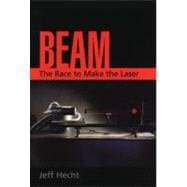
| PROLOGUE: MAY 16, 1960, MALIBU, CALIFORNIA | 3 | (113) | |||
|
7 | (12) | |||
|
19 | (14) | |||
|
33 | (13) | |||
|
46 | (14) | |||
|
60 | (13) | |||
|
73 | (10) | |||
|
83 | (11) | |||
|
94 | (12) | |||
|
106 | (10) | |||
| 10 "EVERYBODY KNEW IT WAS GOING TO HAPPEN WITHIN MONTHS"-BELL LABS FEELS SAFELY IN THE 'LEAD | 116 | (11) | |||
| 11 A CRASH PROGRAM AT "PIPSQUEAK INC." | 127 | (13) | |||
| 12 THE SIREN CALL OF THE LASER | 140 | (7) | |||
| 13 THE CRITICAL QUESTION OF EFFICIENCY | 147 | (11) | |||
| 14 AN IDEA SIMPLER IN THEORY THAN IN PRACTICE | 158 | (11) | |||
| 15 TRIUMPH IN THE PALACE OF SCIENCE | 169 | (14) | |||
| 16 AN UNEXPECTED STRUGGLE FOR ACCEPTANCE | 183 | (12) | |||
| 17 "WE WERE ASTOUNDED"-A STUNNED REACTION | 195 | (14) | |||
| 18 RUNNERS-UP CROSS THE FINISH LINE | 209 | (12) | |||
| 19 EPILOGUE | 221 | (16) | |||
| DRAMATIS PERSONAE | 237 | (4) | |||
| SOURCES | 241 | (18) | |||
| BIBLIOGRAPHY | 259 | (8) | |||
| INDEX | 267 |
The New copy of this book will include any supplemental materials advertised. Please check the title of the book to determine if it should include any access cards, study guides, lab manuals, CDs, etc.
The Used, Rental and eBook copies of this book are not guaranteed to include any supplemental materials. Typically, only the book itself is included. This is true even if the title states it includes any access cards, study guides, lab manuals, CDs, etc.